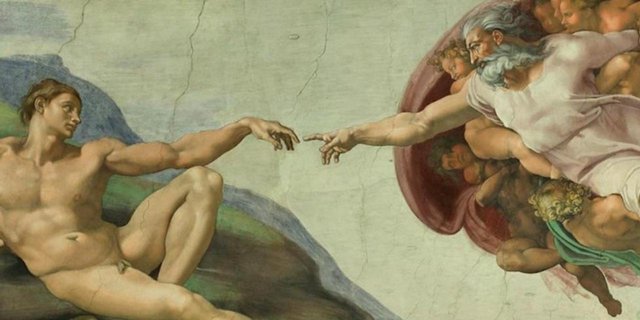Life and creativity of Michelangelo / part 2/
In the spring of 1501, Michelangelo returns to Florence, where the Republic has already strengthened and became more moderate (after the execution of Savonarola in 1498) under the rule of the Chanfaloniere Piero Soderini. Undoubtedly, he was attracted by the Cathedral's Board of Trustees project to provide a huge marble block (somewhat shaped by a former master builder) of a volunteer sculptor who would have the colossal statue of the Prophet David to decorate one of the church's counterparts. Florence's artistic philosopher, which includes fifteen well-known masters, including Leonardo da Vinci, Boticelli, Piero di Cosimo and Perugino, decides to put the "Greater" in front of the Senery, thus emphasizing more civilian than biblical significance. Immediately thereafter, Soderdalee gave Michelangelo a fresco for the Council Hall in the same palace, where the episode of the Pisa war in 1364, Battle of Kashina, was to be recreated. This order is inspired by the same incentives: to give the Florentines impressive examples to strengthen their patriotism and to incite reprisals against external enemies. These motives correspond to the ideas of the Secretary of the Florence Republic, Nichola Machiavelli, who establishes a permanent Civil Militia and renounces the services of paid mercenaries (condottiere). The fresco was made on cardboard, the project was exhibited in the palace of the Senery, then in the palace of the Medici, but later it was torn apart and lost. In the following years, Michelangelo works for wealthy merchants from Florence, in particular members of the Socks Corporation (Anjo Donnie, Tadeo Tadei). He also produced a sculptured altar for Cardinal Francesco Piccolini (who in 1503 was a Pope named Pius III) for the cathedral in Siena.
This creative period, in which Michelangelo created paintings for local patrons. From April 1508, Michelangelo was again in Rome, where he commissioned a new order: a much less costly decorative fresco on the ceiling of the Sistine Chapel, built in 1475 by Giovanni dei Dolci for Sixe IV Della Rovere (1471-1484), uncle of Pope Julius II. Michelangelo made the fresco for four years, and then, after the pope's death in February 1513, concluded a new contract to build a tomb with the heirs of the deceased Pope. But the conceived projects of the new Pope, Leo X of the Medici family (1513-1521), delay the making of statues for the ruins of Julius II. The Pope, coming from Florence, wants to bring something new in the look of his hometown at all costs. He commands to build a lush facade of the undeveloped Medici San Lorenzo church. Michelangelo hurries to sign up for the competition alongside many prominent architects of the era, Sangallo, Sansovino (PM) and Rafaello. In an unorthodox way, he shifts his rivals and collaborators who want to intrude him. Between 1513 and 1518, he often walked in the marble quarries of Carara to oversee the extraction of the large blocks he chose for the tomb of Julius II and the San Lorenzo façade. Finally, Leo X refuses to build the costly façade and gives priority to an undertaking that appears to be more important after the death of two members of the Medici family who ruled Florence - Julian, the Duke of Nemour (1513-1516) and Lorenzo , Duke of Urbino (1516-1519). Thus, the idea of a burial chapel was born, in which the remains of Lorenzo the Magnificent (died in 1492), the father of Leo X, and his brother Julian, who was murdered during the conspiracy of Patsi in 1478.
With a very modest project, Michelangelo succeeds, as in the case of the Sistine Chapel, to make Medici (the relationship with the artist keeps Cardinal Julio, the future Pope Clement VII) approving a much more ambitious project that includes a richer architectural framework and a multitude of carved hand sculptures. The construction of the Lorenziana Library, located on the west side of the San Lorenzo Monastery complex, is added to the large building site from 1524. This is the first public library of the Renaissance, which was destined to preserve the Lorenzo Magnifices manuscripts. The development of these projects is protracted because the Medici, after the devastation of Rome in 1527, were again expelled from Florence and the last republic was restored in the city. After regaining the republican sympathies, Michelangelo began working for the new government, and on April 6, 1529, he was appointed Chief of Staff for City Fortifications. Being aware of the weakness of Florence's new government and fear of the counter-attack of the Pontifical and Imperial troops, united, the artist took advantage of an inspection of Ferrara's fortifications and avoided Venice where he planned to respond to Francois I's invitation and escape in France.

hay @godflesh i am votes your post ,so plz votes my post and follow
Hi, I really liked your content, I gave you a vote in favor, I hope you see my blog and give a vote in favor of my new publication, kisses